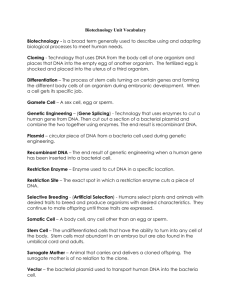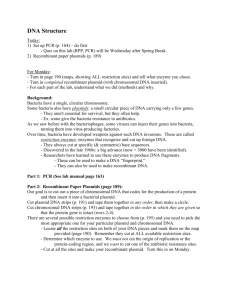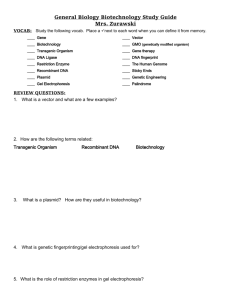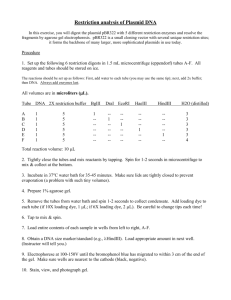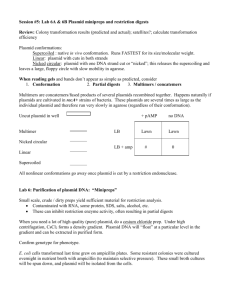Lab: Restriction analysis of plasmid DNA
advertisement
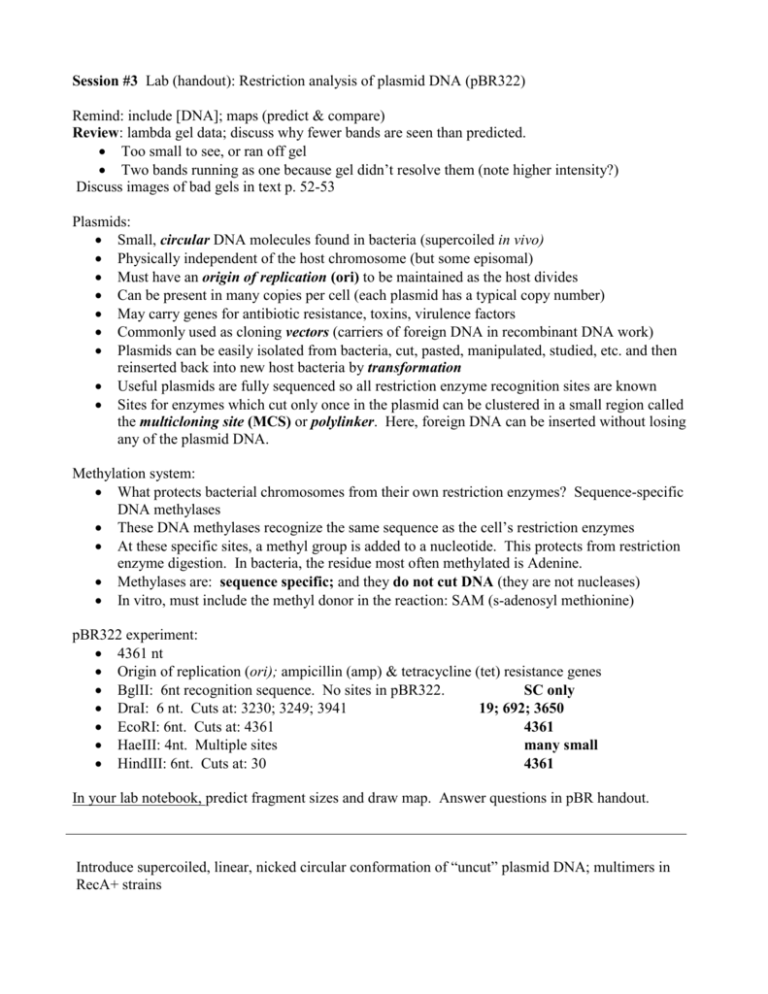
Session #3 Lab (handout): Restriction analysis of plasmid DNA (pBR322) Remind: include [DNA]; maps (predict & compare) Review: lambda gel data; discuss why fewer bands are seen than predicted. Too small to see, or ran off gel Two bands running as one because gel didn’t resolve them (note higher intensity?) Discuss images of bad gels in text p. 52-53 Plasmids: Small, circular DNA molecules found in bacteria (supercoiled in vivo) Physically independent of the host chromosome (but some episomal) Must have an origin of replication (ori) to be maintained as the host divides Can be present in many copies per cell (each plasmid has a typical copy number) May carry genes for antibiotic resistance, toxins, virulence factors Commonly used as cloning vectors (carriers of foreign DNA in recombinant DNA work) Plasmids can be easily isolated from bacteria, cut, pasted, manipulated, studied, etc. and then reinserted back into new host bacteria by transformation Useful plasmids are fully sequenced so all restriction enzyme recognition sites are known Sites for enzymes which cut only once in the plasmid can be clustered in a small region called the multicloning site (MCS) or polylinker. Here, foreign DNA can be inserted without losing any of the plasmid DNA. Methylation system: What protects bacterial chromosomes from their own restriction enzymes? Sequence-specific DNA methylases These DNA methylases recognize the same sequence as the cell’s restriction enzymes At these specific sites, a methyl group is added to a nucleotide. This protects from restriction enzyme digestion. In bacteria, the residue most often methylated is Adenine. Methylases are: sequence specific; and they do not cut DNA (they are not nucleases) In vitro, must include the methyl donor in the reaction: SAM (s-adenosyl methionine) pBR322 experiment: 4361 nt Origin of replication (ori); ampicillin (amp) & tetracycline (tet) resistance genes BglII: 6nt recognition sequence. No sites in pBR322. SC only DraI: 6 nt. Cuts at: 3230; 3249; 3941 19; 692; 3650 EcoRI: 6nt. Cuts at: 4361 4361 HaeIII: 4nt. Multiple sites many small HindIII: 6nt. Cuts at: 30 4361 In your lab notebook, predict fragment sizes and draw map. Answer questions in pBR handout. Introduce supercoiled, linear, nicked circular conformation of “uncut” plasmid DNA; multimers in RecA+ strains





